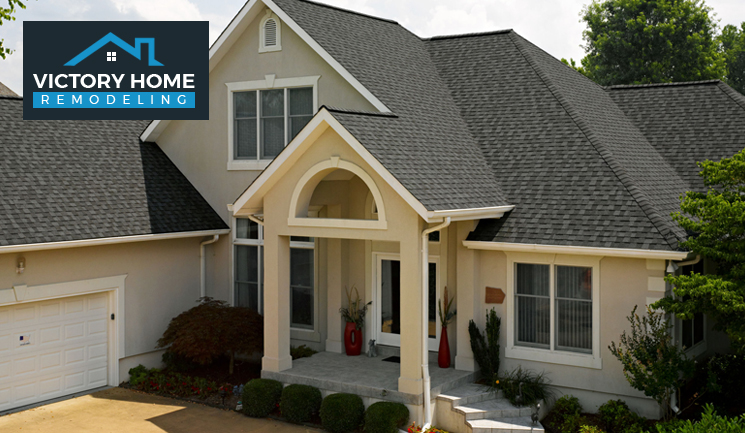First Meeting
This is the initial stage where a detailed inspection of the current roof is conducted. The aim is to understand the extent of the damage or wear and determine the necessary repair or replacement steps. At this stage, any queries or concerns of the homeowner are addressed, and valuable input is considered in shaping the project.
Estimate & Design
Once the inspection is complete, an estimate for the project is developed. This includes the cost of materials, labor, and any other related expenses. A design phase is also part of this stage, where the type of roof and aesthetics are planned, keeping in mind the structure and style of the property.
Roof Repair & Replacement Permit
Before the actual work begins, obtaining the required permits by local building codes is necessary. This step ensures that the repair or replacement is done following the rules and regulations of the jurisdiction, preventing any legal issues down the line.
Work Begins
After obtaining the necessary permits, the actual roof repair or replacement commences. This stage involves the removal of the existing roof (if required), followed by installing the new roof. All work is done by ensuring the utmost safety and minimal disruption to the household.
- Initial Roof Inspection: A specialized team will assess your existing roof, identifying any deterioration, leaks, or damages. Based on the assessment, they will determine the necessary repairs or replacements.
- Selecting Your Roofing Material: After inspecting, choose the suitable roofing material based on factors like home style, climate, and budget. Pick a material that complements aesthetics and provides durability and weather resistance.
- Removal of the Old Shingles: After material selection, old shingles are removed carefully. This meticulous process prevents damage to the underlying roof structure, ensuring a smooth surface for new roofing material.
- Prepare the Roof Decking: The roof decking is prepared for installation by inspecting and repairing it to ensure it’s in good condition. A solid and well-prepared decking is crucial for supporting the weight of the new roof and providing a secure installation base.
- Install Any New Vents: This stage includes installing new roof vents. Proper ventilation prevents heat and moisture buildup, enhancing energy efficiency and roof longevity.
- Install Roof Flashing: Roof flashing is crucial for directing water away from areas where the roof changes direction or has penetrations (e.g., chimneys or vents) to prevent leaks.
- Install Starter Shingles: Before installing the main shingles, starter shingles are laid down along the eaves. These special shingles provide a straight edge and help prevent leaks by diverting water into the gutters.
- Install Roof Replacement Shingles: New shingles are installed after the starter shingles. Each shingle is strategically positioned and securely attached to ensure a tight seal against wind and water. Quality installation impacts roof durability and functionality.
- Put In The Ridge Vent: A ridge vent is installed at the roof’s peak, allowing moisture and hot air to escape from the attic. It helps maintain a balanced temperature inside the home and extends the roofing system’s life.
- Complete Clean-Up: The final stage includes thoroughly cleaning the work area and removing all debris and waste materials. A post-installation inspection ensures high-quality roof installation.
Scheduling Inspection
Upon completion of the work, an inspection is scheduled. This ensures the repair or replacement has been performed correctly and to the highest standards. Any issues found during the inspection are addressed promptly to ensure the safety and longevity of the new roof.
- Rough-In Inspection: The rough-in inspection checks the integrity of the roof’s base layers before installing new roofing material. It ensures the decking is solid, undamaged, and ready to support the new roof. Any necessary repairs to the roof’s infrastructure are identified at this stage.
- Second Inspection: The second inspection occurs after installing the new roofing material, verifying proper installation, and preventing leaks. It is critical for affirming functionality and weather resistance.
- Final Inspection: After all roofing work and cleanup, the final inspection is done. It ensures that every aspect of the project meets high quality, safety, and aesthetic standards. Any minor issues are identified and promptly addressed, ensuring the longevity and durability of your new roof.
Timeline for Roofing Services in Los Angeles
Roofing services encompass a broad spectrum of activities aimed at prolonging the lifespan of your roof, enhancing its appearance, and ensuring its functionality. From simple repairs to comprehensive roof replacements, these services are performed by skilled professionals who employ the best materials and techniques to provide optimal roofing solutions.
| Type of Roofing Service |
Permit Requirements |
Project Duration |
| Repair: Patching leaks, replacing damaged shingles, fixing flashing |
Typically not required for minor repairs; more extensive repairs may require permits |
1-3 days |
| Maintenance: Cleaning gutters, inspecting and clearing debris, applying protective coatings |
No permit required |
Half-day to 1 day |
| Replacement: Complete tear-off and reinstallation of roof covering |
Building permits and roofing permits are usually required |
3-7 days for simple roofs; 7-14 days for complex roofs |
| Installation (New Construction): Applying roofing to a new structure |
Building permits and roofing permits are usually required |
3-7 days for simple roofs; 7-14 days for complex roofs |
| Specialty Work: Skylight installation, metal roof installation, green roof installation |
May require additional permits depending on the complexity and local regulations |
Variable, depending on the specific specialty work |











